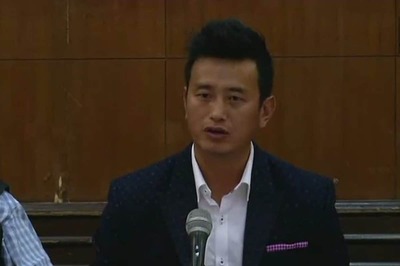
views
How do you reimagine a story?

Keep the characters recognizable. Someone who reads your reimagined story should be able to tell who the characters are. Feel free to change a few things about them, but don’t switch their personalities completely.
Add commentary on the original story. What is your version saying about the old version? Are you telling the story from someone else’s perspective? Are you shedding light on an issue that wasn’t explored in the original version? Try to circle back to the original story at some point in your new one.
Let your story stand on its own. While people should be able to recognize the original story, yours should engage the audience all by itself, too. Think about someone who hadn’t read the original story you based yours off of. Would they still understand it? Would they get the overall message?
How do you write a modern retelling of a story?

Make the dialogue realistic. Characters from stories set in older times might have a more formal way of speaking. If you’re going to put your characters into modern day, make sure they sound normal and natural. You don’t have to include a bunch of slang words (in fact, that can be a little jarring), but make sure your characters speak to each other like you’d expect to hear someone talk today.
Put a twist on classic events. Your story should mirror the original one, but you don’t want it to be too predictable. For instance, if a character in the original dies by poison, have them get in a car crash instead. If a character in the original sets off on a long journey through the mountains, have them go backpacking through Europe in your version.
How do you write a classic story?

Create memorable characters. Each of your characters should have their own personalities, flaws, and appearances. If they’re too similar, they might not be diverse enough to be remembered—and that can muddle things for your readers.
Make the story feel timeless. Tons of classic stories are set decades or centuries ago, but we can still relate to them. Pick something that a lot of people can relate to, like love, sadness, anger, greed, or loss of a loved one, and write about it! That way, if someone read your story 100 years in the future, they would still like it and empathize with the characters.
Leave room for interpretation. Try not to tell the reader what they should think about your story or the characters in it. Leave the underlying message and the theme ambiguous so that anyone can interpret it on their own. That way, your audience will think about your short story, even when they’re done reading.
How do you write someone else’s story?

Do your research. If you’re writing about someone else, you need to act like a journalist. Try to interview your subject if you can, or find high quality sources about their life online. Whenever possible, look for primary sources, like photos, public records, or journals to verify the story.
Make the story personable. It’s easy to write about someone else and simply give a timeline of events. However, if you really want your story to make an impact, try to present the person’s life to the reader like you’re talking about an old friend.
How do you edit a short story?

Check the plot. Even short stories need a concrete beginning, middle, and end. Usually, readers want a resolution—even if the ending is ambiguous, you should avoid leaving your audience on a cliffhanger. Double check that there’s an inciting incident or a conflict within your story.
Revise it for clarity. Read your story out loud to make sure everything makes sense. If the characters speak, it should be clear who is talking and when. If the characters move around, make it clear to the reader where they are and what’s going on around them.
Edit your grammar and punctuation. A simple mistake can really throw off your entire story. Go through everything with a fine-toothed comb and double check your spelling, grammar, and punctuation for errors. It might be helpful to read the story out loud so you can’t skim past any mistakes.
How many drafts should a short story have?

Aim for at least 2 drafts. While there’s no perfect number of drafts a short story should have, it should definitely be more than one! Try to write your first draft all in one sitting, take a break, and then get to editing. After that, you can decide whether you want some feedback or you’d like to finish it up. A great way to get feedback on a short story is to send a draft to family members or friends. Ask them to read it and tell you what they liked, what they didn’t like, and if any part of it was confusing.



















Comments
0 comment